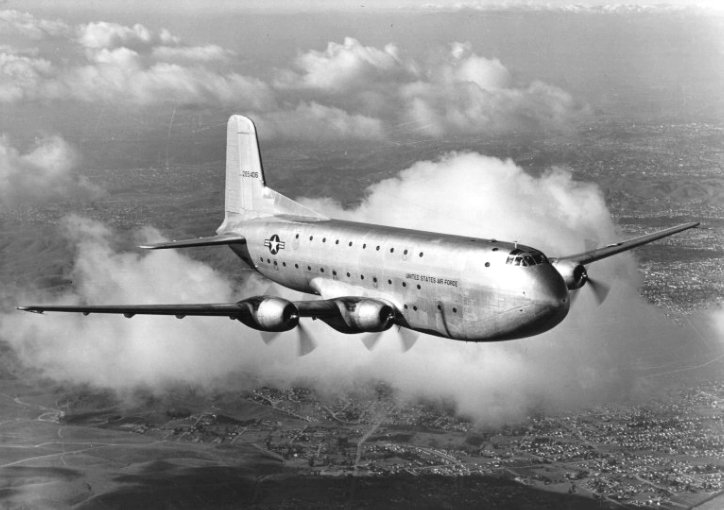A Double-deck aircraft has two decks for passengers; the second deck may be only a partial deck, and may be above or below the main deck. Almost all commercial aircraft have one passenger deck and one cargo deck for luggage and ULD containers, but only a few have two decks for passengers, typically above a third deck for cargo.

Many early seaplane airliners, such as the Boeing 314 Clipper and Short Sandringham, had two decks. Following World War II the Stratocruiser, a partially double-decked derivative of the B-29 Superfortress, became popular with airlines around the world.

The first double-deck jet airliner was the widebody Boeing 747, with the top deck smaller than the main level. Boeing originally designed the distinctive 747 bubble top for defense and commercial air cargo. The small top deck permitted the cockpit and a few passengers and nose doors with unobstructed access to the full length of the hold. The 747 was the Boeing bid for a US Department of Defense air cargo competition that was won by the C-5 Galaxy, similarly double decked, but also roll-on/roll-off. Only after the bid failed did Boeing change the 747’s interior design, putting many passengers on the upper cargo deck, and removing the nose cargo doors. Most 747s are passenger jets, and a small percentage are cargo jets with nose doors.

The new widebody Airbus A380 has two passenger decks extending the full length of the fuselage, as well as a full-length lower third deck for cargo. Singapore Airlines took delivery of the first A380-800 in a ceremony in Toulouse, France. SIA had fitted them with 12 private luxury suites and two double beds.




















Many early seaplane airliners, such as the Boeing 314 Clipper and Short Sandringham, had two decks. Following World War II the Stratocruiser, a partially double-decked derivative of the B-29 Superfortress, became popular with airlines around the world.

The first double-deck jet airliner was the widebody Boeing 747, with the top deck smaller than the main level. Boeing originally designed the distinctive 747 bubble top for defense and commercial air cargo. The small top deck permitted the cockpit and a few passengers and nose doors with unobstructed access to the full length of the hold. The 747 was the Boeing bid for a US Department of Defense air cargo competition that was won by the C-5 Galaxy, similarly double decked, but also roll-on/roll-off. Only after the bid failed did Boeing change the 747’s interior design, putting many passengers on the upper cargo deck, and removing the nose cargo doors. Most 747s are passenger jets, and a small percentage are cargo jets with nose doors.

The new widebody Airbus A380 has two passenger decks extending the full length of the fuselage, as well as a full-length lower third deck for cargo. Singapore Airlines took delivery of the first A380-800 in a ceremony in Toulouse, France. SIA had fitted them with 12 private luxury suites and two double beds.
List of double-deck aircraft:
This transport-related list is incomplete; you can help by expanding it and post it in comments option.- Double-deck flying boats



- Saunders-Roe Princess – did not enter service.

- Partial second passenger deck
- Airbus A340-600
- Optional lower deck toilet and crew rest

- Boeing 747


- Ilyushin Il-86

- Lower deck galley

- Lower deck “self loading luggage storage”

- Lockheed L-1011 Tristar

- Lower deck cargo hold
- Lower deck galley

- Lower deck lounge (Pacific Southwest Airlines)
- Tupolev Tu-114

- Lower deck galleys.
- Lower deck aircrew rest area.
- Full second passenger deck

- Cargo aircraft with a separate passenger deck







- Double-deck cargo aircraft






No comments:
Post a Comment